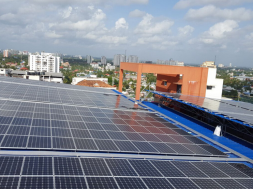
Exposure to Adani group well below limit, says State Bank of India
Lender says all exposures secured by cash generating assets, and debt service will not be a challenge
The country’s largest lender, State Bank of India, said on Friday that its exposure to the Adani Group was well below the Reserve Bank of India’s (RBI’s) Large Exposure Framework and was secured by cash generating assets.
The statement comes as the Adani Group lost Rs 4.18 trillion in market capitalisation in the last two trading sessions after a report by US-based investment research firm Hindenburg Research alleged that the group was engaged in “a brazen stock manipulation and accounting fraud scheme”. Hindenburg Research alleged that there was 85 per cent downside in group stocks “purely on fundamental valuations”.
The conglomerate had called the report “maliciously mischievous, unresearched”. It has said that it is “evaluating the relevant provisions under US and Indian laws for remedial and punitive action against Hindenburg Research”.
Indian banks have an exposure of around Rs 80,000 crore to the Adani Group, which is 38 per cent of the group’s total debt.
“While as a matter of policy, we don’t comment on individual clients, in the interest of setting the context right, we wish to clarify that SBI’s exposure to Adani Group is well below the Large Exposure Framework. All exposure to the group from SBI is secured by cash generating assets with adequate TRA / Escrow mechanism in place, hence debt service will not be a challenge,” said Swaminathan J, managing director of corporate banking and subsidiaries at SBI, in a statement. SBI, however, did not comment on the amount of its exposure to the group.
Brokerage house CLSA estimated the exposure of private banks to the group at 0.3 per cent of FY24 (financial year 2023-24) loans and 1.5 per cent of FY24 net worth. “For PSU banks, the exposure is 0.7 per cent of FY24 loans and 6 per cent of FY24 net worth.”
The top five Adani Group companies –Adani Enterprises, Adani Ports, Adani Power, Adani Green, and Adani Transmission – had a consolidated debt of Rs 2.1 trillion as of FY22, according to CLSA. Of this, bank debt – term loans, working capital loans, and other facilities –
The top five Adani Group companies –Adani Enterprises, Adani Ports, Adani Power, Adani Green, and Adani Transmission – had a consolidated debt of Rs 2.1 trillion as of FY22, according to CLSA. Of this, bank debt – term loans, working capital loans, and other facilities – accounted for about 38 per cent.

Swaminathan said SBI keeps a watch on its exposures to large groups as a matter of policy and will take measures from time to time based on its assessment. He added that Indian banks’ exposure to the group as a percentage of their total debt had declined over the past two-three years.
“Same period, their debt to Ebitda also has been getting better, which helps the group to service its obligations comfortably,” he said.
The Adani Group has made some big acquisitions in the recent past, including Swiss cement major Holcim’s stake in Ambuja Cements and its subsidiary ACC for $10.5 billion or Rs 81,361 crore, including the open offers.
SBI said most of the group’s acquisitions were financed through foreign borrowings and market instruments, and hence there was no exposure built up in the Indian banking system on this count.
“Coming to SBI, we keep reviewing the non-funded exposures to all large entities periodically and there is no concern or likelihood of any devolvement at this juncture,” Swaminathan added.












